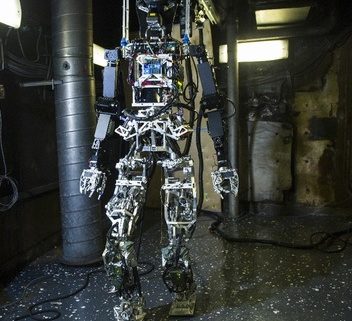For five years, researchers at Virginia Tech have been working on the human-like, bipedal Shipboard Autonomous Firefighting Robot (SAFFiR). Recently, the SAFFiR was successfully tested on the Chatwal, the Navy’s firefighting ship.
SAFFiR used LIDAR (rotating lasers) to navigate through dense smoke across uneven floors. It located hot spots with its stereoscopic thermal imaging cameras, and dowsed a small fire with a hose.
SAFFiR stands at five feet, ten inches and weighs 143-pounds. Its electrical motors are protected from water by raingear.
It may have autonomous in its name, but currently it is controlled by human operators through a console. Eventually, natural language and gestures will be additional control options.
Shipboard fires are a nasty business. Not only do flammable systems and ordinances pose a threat, but also human firefighters may not have the latest training. Indeed, their responses may actually make the situation worse.
SAFFiR is bipedal so it can work in the cramped shipboard environments designed for humans. Eventually humans and unmanned systems will integrate into hybrid firefighting teams.
SAFFiR is sponsored by the Office of Naval Research (ONR). ONR plans to expand SAFFiR’s duties to include checking for leaks, scanning for corrosion, and taking measurements.









